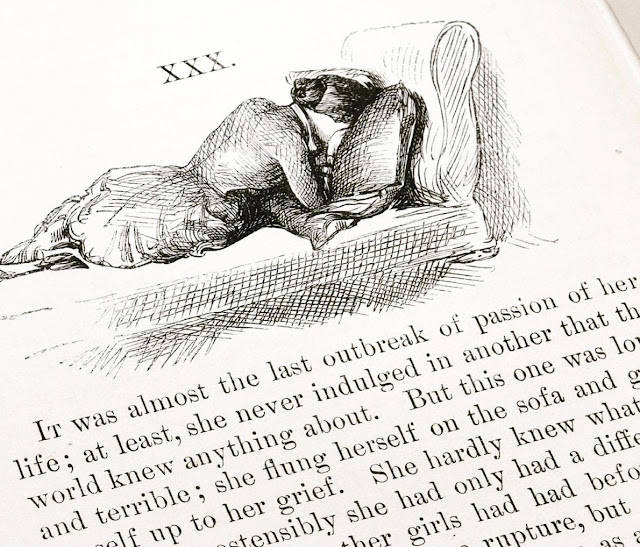Bernard Perlin, The Lovers. 1946. MoMA.
*
Reliquary Arm of St. Valentine. Swiss. 14th century. Silver, partial gilt, sapphire. On view in Gallery 306 of The Met.
*
Algorithmic love letter generated by a computer program created by Christopher Strachey in 1952. ("M.U.C." is "Manchester University Computer.")
*
*
The language of flowers, via stopping off place.
*
Jan Boon, Carnations.
*
Victorian gold heart token with a line from Keats' Endymion: "On every morrow we are wreathing a flowery band to bind us to the earth."
*
Page from a first-edition copy of Washington Square by Henry James, via Honey and Wax Books.
*
There are the lover and the beloved, but these two come from different countries. Often the beloved is only a stimulus for all the stored-up love which has lain quiet within the lover for a long time hitherto. And somehow every lover knows this. He feels in his soul that his love is a solitary thing. He comes to know a new, strange loneliness and it is this knowledge which makes him suffer. So there is only one thing for the lover to do. He must house his love within himself as best he can; he must create for himself a whole new inward world—a world intense and strange, complete in himself.
Carson McCullers, The Ballad of the Sad Cafe.
*
Loretta, I love you. Not like they told you love is, and I didn't know this either—but love don't make things nice. It ruins everything. It breaks your heart. It makes things a mess. We aren't here to make things perfect. The snowflakes are perfect. The stars are perfect. Not us. Not us! We are here to ruin ourselves, and to break our hearts, and love the wrong people, and die. The storybooks are bullshit! Now I want you to come upstairs with me and get in my bed!
*
According to the nineteenth-century American zoologist Louis Agassiz, the snail is “a very model lover” that “will spend hours…paying attentions the most assiduous to the object of [its] affections.” But there is a sting in the tail of snail romance, for as explained by another nineteenth-century observer, the courtship of snails “realises the Pagan fable of Cupid’s arrows, for, previous to their union, each snail throws a winged dart or arrow at its partner.”
*
The German artist and theorist David Link, in his book Archaeology of Algorithmic Artefacts, observes that Strachey’s program was the first experiment in text-generating software, predating by thirteen years the M.I.T. chatbot ELIZA, which offered interactive psychotherapy. “Ultimately the software is based on a reductionist position vis-à-vis love and its expression,” Link writes. “Love is regarded as a recombinatory procedure with recurring elements.”
Siobhan Roberts, "Christopher Strachey's Nineteen-Fifties Love Machine." The New Yorker, 2/14/2017.
*
In her new book Love 2.0: How Our Supreme Emotion Affects Everything We Feel, Think, Do, and Become, the psychologist Barbara Fredrickson offers a radically new conception of love ... it is what she calls a "micro-moment of positivity resonance." She means that love is a connection, characterized by a flood of positive emotions, which you share with another person—any other person—whom you happen to connect with in the course of your day. You can experience these micro-moments with your romantic partner, child, or close friend. But you can also fall in love, however momentarily, with less likely candidates, like a stranger on the street, a colleague at work, or an attendant at a grocery store.
*
Wishing you recombinatory procedures with recurring elements and micro-moments of positivity resonance.










